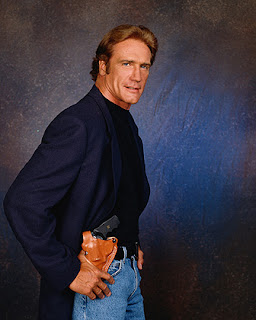Rocky and Bullwinkle (1959-64, and rehashed into many different series during the 1960s) is often praised as genius, a classic of animation. Amazon promises: "the wittiest, most inspired, and relentlessly hilarious animation ever created!"
No one thought it was great in the 1960s. It was relegated to the Sunday morning ghetto, with
Totalitarian Television and
Davy and Goliath.
Either of which were preferable to the Moose and Squirrel.
Ok, maybe I was too young to understand the clever satire, so a few months ago I purchased and watched Season 1 on DVD.
I still hated it.
50% of each episode was devoted to repetitive, incomprehensible filler:
When the mountain they are climbing is destroyed by lightning, Rocky and Bullwinkle fall to their deaths, but are resurrected in a field of daisies. Why is this funny?
Magician Bullwinkle tells Rocky, "Watch me pull a rabbit out of my hat." He pulls out a scary monster instead, and quips, "I take a 7 1/2." I assume that refers to his hat size, but how is it an appropriate punchline?
When you finally got to the story, it was an endless serial cut into five-minute segments. I never saw the first or the last of them, so I had no idea what was going on. But the titles were bound to involve incomprehensible puns.
The Treasure of Monte Zoom
Maybe Dick
The Guns of Abalone
Kerwood Derby
I know what most of them refer to now, except "Kerwood Derby." It's a malapropism of "Durward Kirby," a very, very, very minor tv personality of the early 1960s.
And the animation! There wasn't any. Incomplete art, splashes of color instead of filled-in lines, no backgrounds, static scenes with only the tiniest mouth movement or gestures. Abysmal!
The only things I liked were:
1. The scenes set in Frostbite Falls, Minnesota, the home town of the Moose and Squirrel, where they behaved and were treated like romantic partners.
2. Boris and Natasha, the Cold War spies from Pottsylvania assigned to steal the couple's secret or just grift them in various ways. Although a male-female dyad, they were obviously not a romantic couple, nor did they express any heterosexual interest.
3. Some of the supporting features, like
Fractured Fairy Tales, Mr. Peabody's Improbable History, and
Aesop & Son.

4. Some of the parodies of dull poets, like
Henry Wadsworth Longfellow and William Wordsworth (really, who would write an entire poem in praise of daffodils?)
5. Edward Everett Horton, who narrated
Fractured Fairy Tales, played "pansy" roles during the 1930s.
The Moose That Roared (2000), a history of the program, reveals that Bill Scott, Jay Ward's partner and the voice of Bullwinkle, often made homophobic statements. "Women's dresses today look like they were designed by fags," he would rant. Or he would tell a voice artist, "for this story, do your Fag Prince voice."
Of course, lots of people in the 1960s were homophobic, but it is shocking how
Moose That Roared author Keith Scott (no relation) gushes about the homophobia as if it somehow made him endearing: "'There are too many fags in Hollywood,' Bill said with his characteristic wit."
See also:
Peabody and Sherman
 The younger Van Dyke got his start at the age of nine, in guest spots on The Dick Van Dyke Show and The New Dick Van Dyke Show (naturally), but he soon struck out on his own, with a brief scene as a hunky volleyball player in Stalk the Wild Child (1976) Soon he was playing square-jawed, muscular hunks, on The New Adventures of Wonder Woman, Tabitha, The A-Team, The Dukes of Hazzard, and so on (he was on the Love Boat four times).
The younger Van Dyke got his start at the age of nine, in guest spots on The Dick Van Dyke Show and The New Dick Van Dyke Show (naturally), but he soon struck out on his own, with a brief scene as a hunky volleyball player in Stalk the Wild Child (1976) Soon he was playing square-jawed, muscular hunks, on The New Adventures of Wonder Woman, Tabitha, The A-Team, The Dukes of Hazzard, and so on (he was on the Love Boat four times). 
















